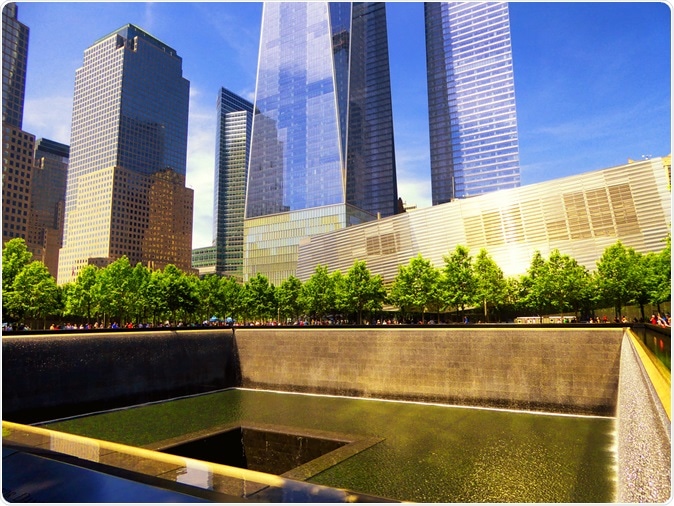The after effects of the terror attacks on 11th September 2001 in the United States are still appearing. Around 15 men who were present near the Ground Zero on the fateful day have been diagnosed with rare forms of male breast cancer. Male breast cancer makes up for less than 1 percent of all breast cancers.

The North Pool of the National September 11 Memorial adjacent to One World Trade Center in Lower Manhattan, New York City United States. Image Credit: Shanshan0312 / Shutterstock
This new data emerges from a client list of a law firm that is specially looking into health cases of those in and around the region on 9/11. There could be many more men who are outside of this data base say experts. Two of the men – Jeff Flynn (65 years old) and John Mormando (51 years old) who were near the zone were initially diagnosed with the cancer and are being treated for it. Both men say that there is no history of breast cancers in their family and they were exposed to toxins on the day.
Flynn was an account manager for a data-storage company Dell EMC and was assigned to Goldman Sachs on Maiden Lane on the fateful day. He was around the region for months after the attack helping Goldman and other financial services firms to set up again.
After a decade, in 2011, he first noticed an abnormality in one of his nipples and was then diagnosed with stage 3 breast cancer for which he underwent extensive operations. Soon the cancer returned as a stage 4 cancer. He was awarded compensation from the September 11th Victim Compensation Fund that helped him pay for his treatment. Mormando was a commodities broker working at the Mercantile Exchange until 2007. He is a triathlete now. Last year he noticed a lump on his chest and was diagnosed with the breast cancer.
Leon Silverstein (89 years old), an Army veteran, was diagnosed with breast cancer and had to be operated upon. As a result of the cancer both his breasts had to be removed in a double mastectomy. He used to live near Battery Park near the Ground Zero for 30 years.

Lymphatic system of the male breast.
Experts believe that apart from those killed during the attacks more people are emerging with long term after effects of the attack. There are over ten thousand individuals who were members of the first responders’ teams for rescue operations or were near the region when the attack took place.
These people have been diagnosed with various forms of cancers due to exposure to the toxins. Over 2000 individuals have ailments that can be attributed to the toxins on that day. The Chief of the fire Department of New York, for example, who was leading the first responder efforts died this June from cancer.